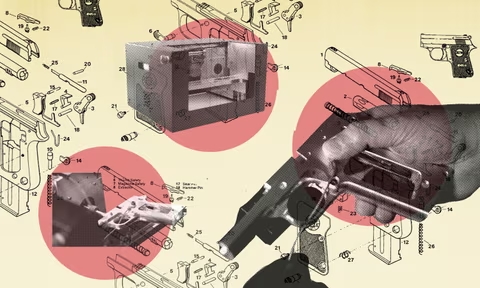Uncategorized
How to Make a Ghost Gun
How to Make a Ghost Gun: An In-Depth Step-by-Step Guide
The topic of how to make a ghost gun has generated considerable interest and controversy. Ghost gun for sale are firearms that can be assembled from readily available parts and lack serial numbers, raising concerns about their accessibility and the challenges they pose to traditional gun control measures. This guide provides a detailed, step-by-step approach to understanding the assembly process while highlighting important legal and safety considerations.
Step 1: Understand the Legal Implications
Before starting, it’s crucial to familiarize yourself with the laws and regulations governing ghost guns in your jurisdiction. Laws vary widely, so research the following:
- State and Local Laws: Check if it is legal to build a ghost gun in your state or locality.
- Registration Requirements: Determine if you need to register the firearm once assembled.
- Age Restrictions: Ensure you meet the age requirements for firearm assembly.
Step 2: Gather Necessary Components
To build a ghost gun, you’ll need specific parts. Here’s a list of essential components:
- 80 Percent Lower Receivers: The part of the firearm that houses the trigger mechanism. This is often considered the firearm itself.
- Upper Receiver: Houses the bolt carrier group and is attached to the lower receiver.
- Barrel: The tube through which the bullet travels. Choose the appropriate caliber for your project.
- Bolt Carrier Group: Critical for cycling the firearm.
- Trigger Assembly: Includes the trigger, hammer, and associated components.
- Stock and Handguard: For stability and handling.
- Miscellaneous Parts: Springs, pins, and screws.
Step 3: Acquire Tools and Equipment
You will need several tools to assemble your ghost gun. Here’s a basic list:
- Armorer’s Wrench: For tightening and loosening various components.
- Drill and Drill Bits: For any necessary modifications.
- Screwdriver Set: To assemble screws and components.
- Pliers: Useful for manipulation of small parts.
- Safety Gear: Goggles and gloves to protect yourself during the assembly process.
Step 4: Assembly Process
4.1 Assemble the Lower Receiver
- Insert the Trigger Assembly: Begin by placing the trigger, hammer, and springs into the lower receiver.
- Secure with Pins: Use the appropriate pins to hold the trigger assembly in place.
- Install the Safety Selector: Insert and ensure it functions properly.
4.2 Attach the Stock
- Position the Stock: Align the stock with the rear of the lower receiver.
- Secure: Use screws or pins to attach it firmly.
4.3 Assemble the Upper Receiver
- Insert the Barrel: Place the barrel into the upper receiver and secure it using the necessary tools.
- Install the Bolt Carrier Group: Slide the bolt carrier group into the upper receiver.
- Attach the Charging Handle: Insert and secure the charging handle.
4.4 Combine the Upper and Lower Receivers
- Align: Position the upper receiver on the lower receiver.
- Secure: Use the takedown pins to connect both parts.
Step 5: Final Checks
- Function Test: Without ammunition, check the trigger and safety functions.
- Inspect: Ensure all parts are secure and properly aligned.
Step 6: Legal Compliance and Safety
- Consider Registration: If required, register your ghost gun with local authorities.
- Follow Safe Handling Practices: Store the firearm safely and ensure it is not accessible to unauthorized individuals.
Conclusion
Building a ghost gun requires careful attention to legal implications, safety considerations, and a thorough understanding of the assembly process. By following this step-by-step guide, you can gain insight into how to make a ghost gun responsibly. Always prioritize safety and compliance with local laws to ensure a secure and lawful experience.

